MUSKOXEN, CLIMATE CHANGE & PHOTO TIPS.
Featured
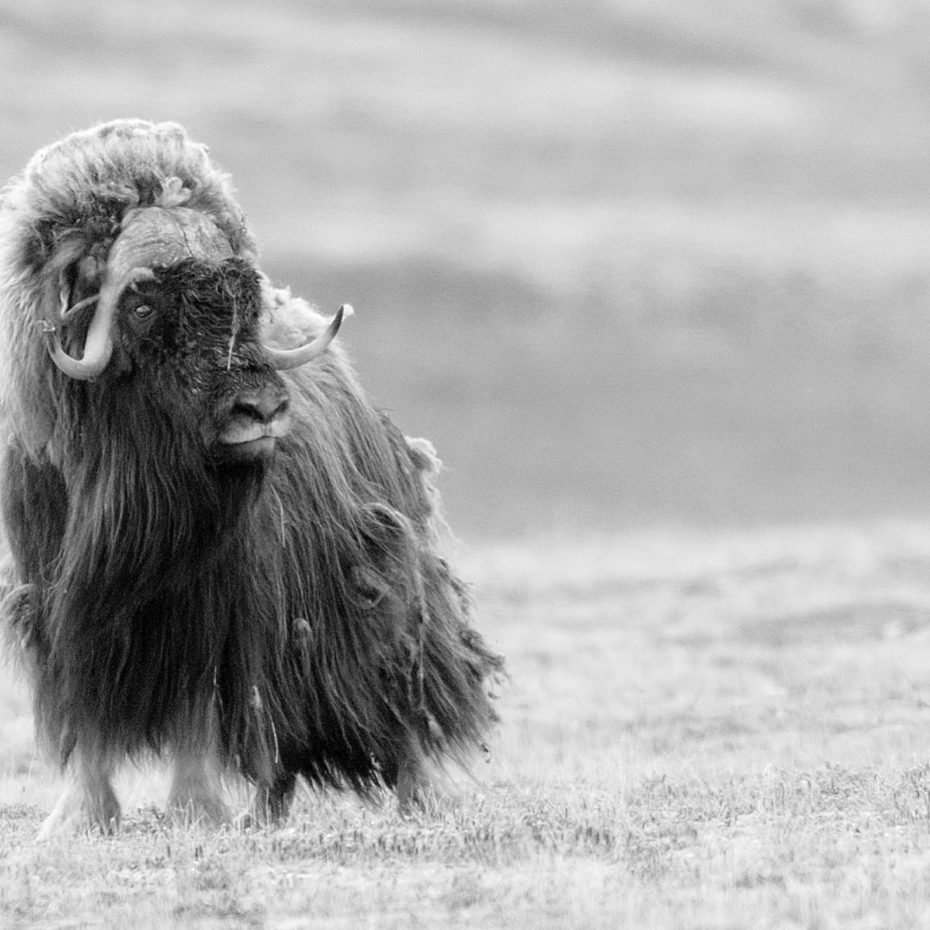
Featured
November 11, 2019 | Arctic Watch & Arctic Haven
Canada's Arctic is home to one of the largest terrestrial mammals - the prehistoric muskoxen. Tessum shares a few facts.

At both our lodges, Arctic Watch and Arctic Haven, we’re very lucky to have resident muskoxen that inhabit the surrounding tundra. Muskox, Ovibos moschatus, or umingmak (in Inuktitut), are a hoofed mammal of the goat family or Caprinae. The Inuktitut name umingmak means “bearded one”.
Both sexes of the muskoxen have long curved horns. The males have a plate between the horns that are used to fight for mating rights during the autumn months (rutting season). Muskoxen stand 1.1 to 1.6 m high at the shoulder, and measure between 135cm and 200cm in length. On average, Muskoxen weigh between 300 lbs and 900 lbs. Their wool is one of the main characteristics that ensure their survival in harsh polar climates - a soft under-coat called “qiviut”, the warmest wool on the planet, and the rough outer coat (guard hair), that protects the qiviut. Essentially, they wear large down jackets!
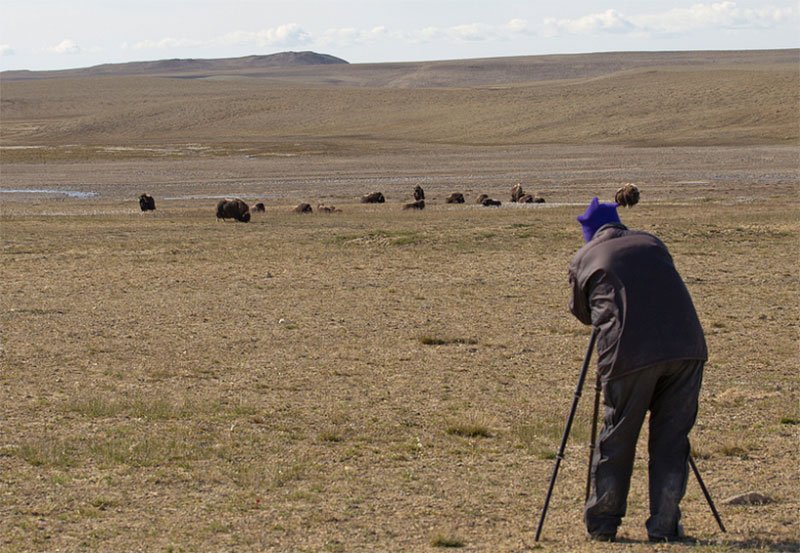
During mating season, when bull muskoxen charge one-another and battle for herd dominance (August at Arctic Watch and September at Arctic Haven), they can reach speeds of up to 65km/h.
Muskoxen are a prehistoric creature that came across the Bering Land Bridge between 90,000 and 200,000 years ago and outlived their cousins (the woolly mammoth). A herd animal, muskoxen live in family groups of 12 - 35 animals in winter and between 4 and 25 in summer. Male muskoxen don’t hold territories - that being said, they do mark their surroundings with their preorbital glans (located in their elbows). Herds will function on age-based hierarchies with mature muskoxen dominating younger ones. Muskoxen are generally residential; they tend to not migrate unless threatened by consistent predators or lack of food.
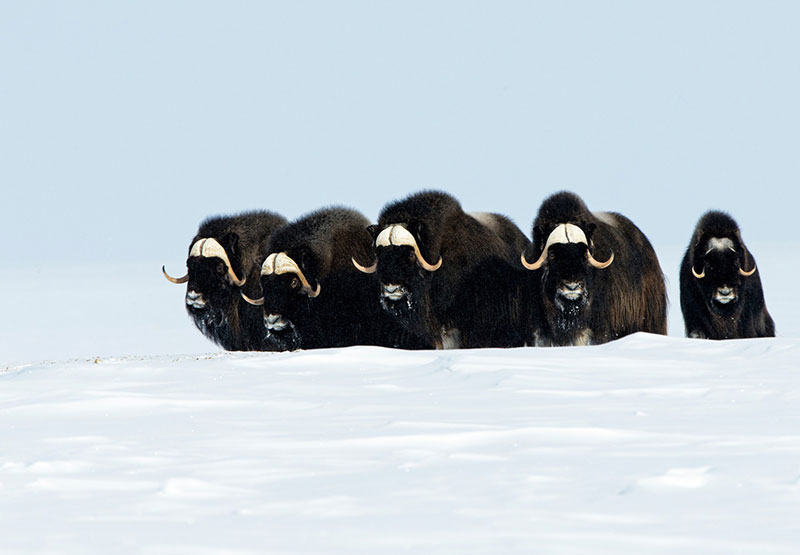
When threatened, muskoxen have two distinctive behavior - when a herd is threatened (by wolves for example), the adults will face outward in a circle, placing the young inside the ring. The calves are protected by the adults in this formation. In areas with heavy human hunting, muskoxen have learned to run instead of forming these circles.
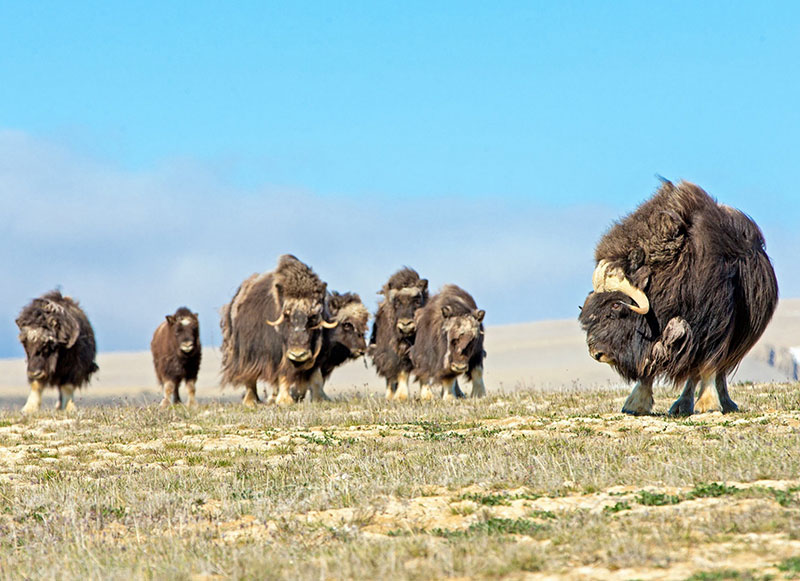
Historically, muskoxen were nearly eradicated in the first half of the 20th century due to over-hunting. Management and regulations brought forth in the second half of the 20th century ensured their survival. It is estimated that the total world population of muskoxen is between 75,000 and 127,000 individuals.
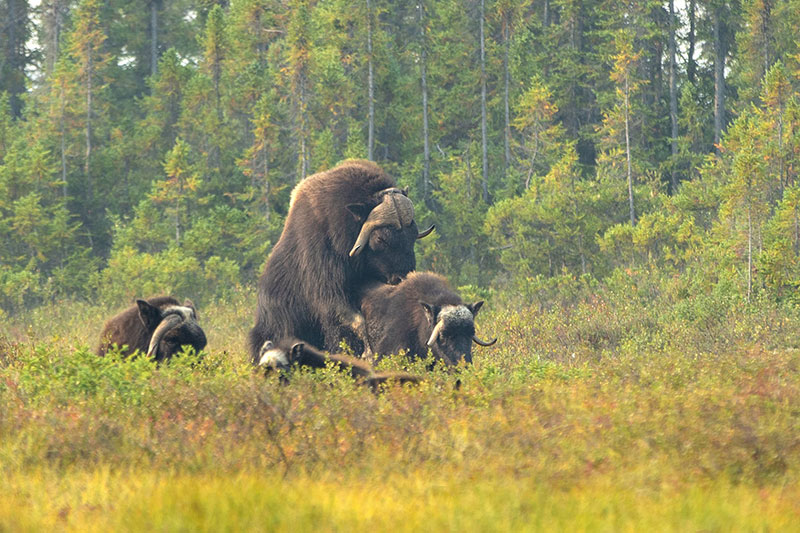
Climate change is affecting muskoxen - and likely faster than polar bears. While polar bears are a gorgeous media poster child, recent studies are showing that climate change is affecting muskoxen populations.
Rain: Warmer winters bring increased winter rains, which are a significant killer of muskoxen. Freezing rain affects Qiviut (the wool that protects muskoxen in cold dry winter months) like a wet down jacket - it packs and freezes. Muskoxen will essentially freeze to death. Winter rains also add layers of ice on the ground that covers their normal food sources - muskoxen can’t penetrate this ice in what would be normally accessible grazing areas. Warmer winters also produce more snow - which makes digging for food a more difficult task. The effect is two-fold; mothers are consistently producing smaller calves, who in turn have a harder time to survive past their first two years of growth.
Disease: new diseases reaching further north are also affecting muskoxen - “Erysipelothrix rhusiopathiae”, a bacteria that is likely being transmitted through lemming fecal matter, was never found in the Arctic previously. The bacteria creates a multitude of symptoms which ultimately kill the muskoxen; blood poisoning, fever, skin lesions and heart inflammation. Banks Island and Victoria Island have seen a 63 and 70 percent drop in population over the past twenty years, in part, to this disease. Susan Kutz, a researcher from the University of Calgary, is pioneering the front-line research on pathogens such as these affecting muskoxen.
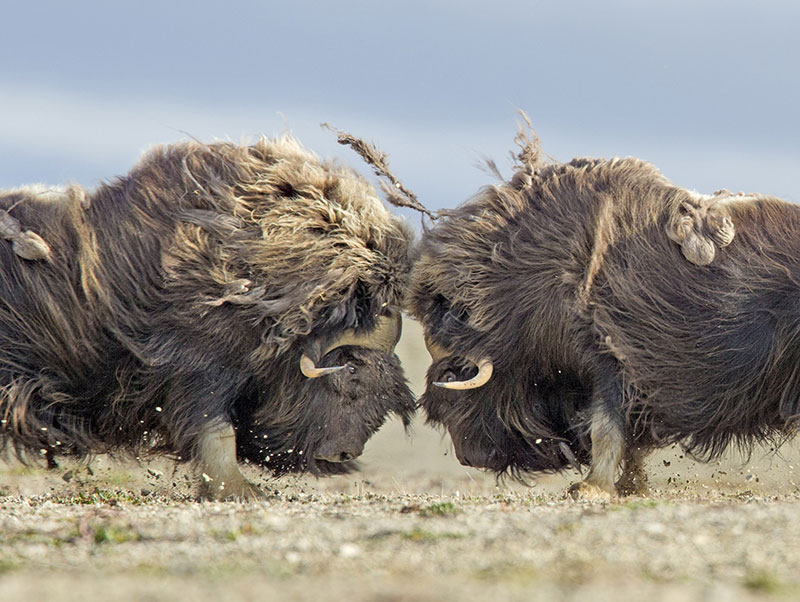
At Arctic Watch, muskoxen tend to feed on willow and small grasses. Their appearance and build is visibly smaller that those of Arctic Haven - who feed on taller grasses, dwarf willow and berries (in autumn). It is thought that with climate change, muskoxen are moving south - several bush pilots in the great slave lake area have reported seeing muskoxen more often in and on tree-line, versus their normal habitat above tree-line.

Muskoxen are some of my favorite beasts to observe - best photographed with a telephoto lens, patience and careful approach, they can be quite receptive and not camera shy! A few tips when photographing muskoxen:
- Try and approach downwind from a herd or individual musk ox. Muskoxen have a good sense of smell and tend to be less stressed when they can only “see you”.
- Big male bulls tend to manage herd dynamics - focus on the male bull and not the females or young.
- Be patient! Don’t rush your approach and observe their behaviors. Are they paying attention to you? Sleeping? Is the bull beginning to corral his females? Males will brush their preorbital glands with their noses as a first show of “defence”. Try not to push the animal beyond this behavior. At times, simply sitting within viewing distance of the herd, but not immediately approaching will show the bull muskoxen that you are not a threat.
- Work your longer lenses. While we all dream of the super close interaction, you’re best to equip yourself with a 400mm lens and a 70-200mm lens.
- Avoid using drones. Muskoxen are very sensitive to drones (even small ones) - while certain arctic animals will often ignore drones or simply don’t care, muskoxen are extremely sensitive to drone photography.
Spending time observing muskoxen is a real treat - respect the animals and you’ll enjoy the moment even more!
Cheers!
Tessum
See Muskoxen at Arctic Watch: https://www.weberarctic.com/adventures/details/discovery-experience-extended
See Muskoxen at Arctic Haven: https://www.weberarctic.com/adventures/details/autumn-discovery-experience-7-days
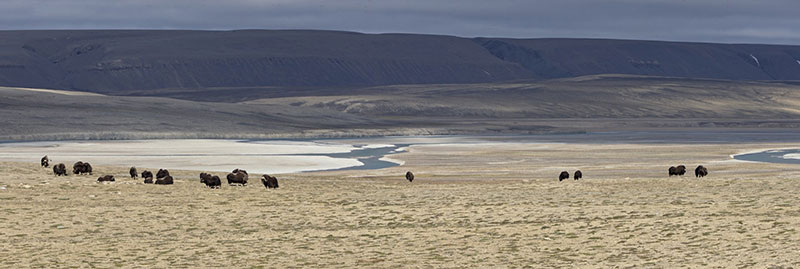
We understand that booking a trip like this is a big endeavour. Please reach out to us with any questions that you might have regarding your upcoming adventure.